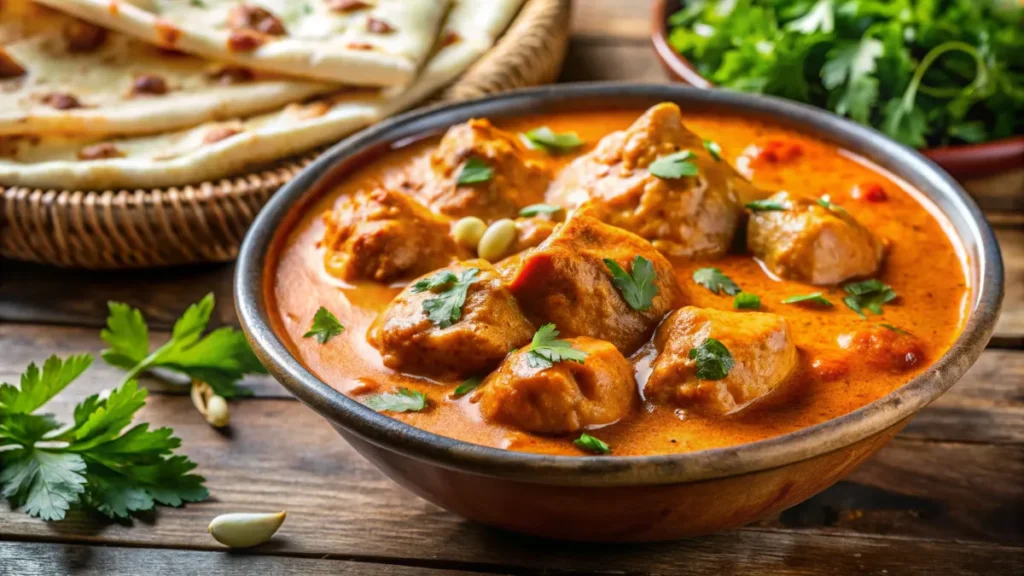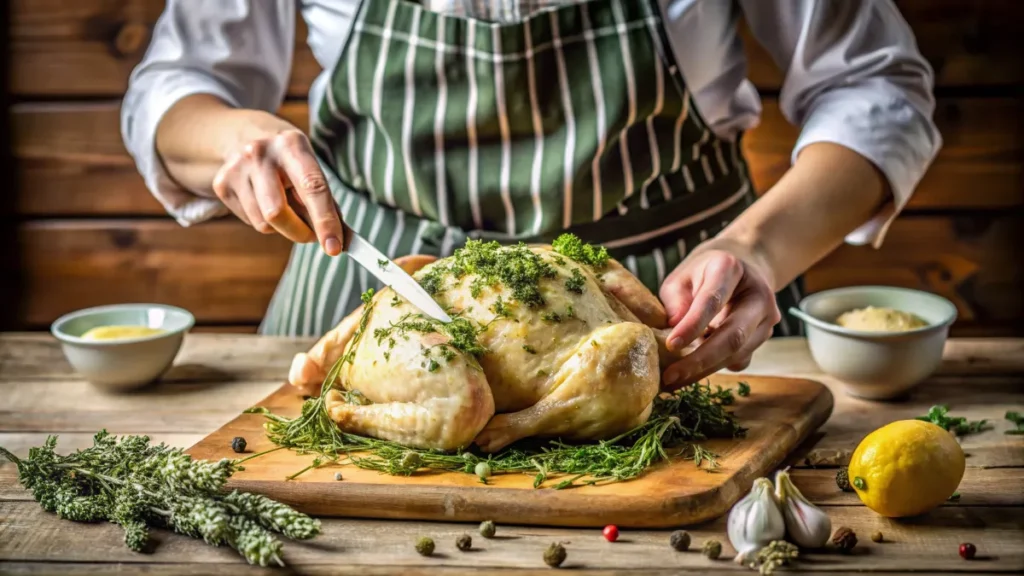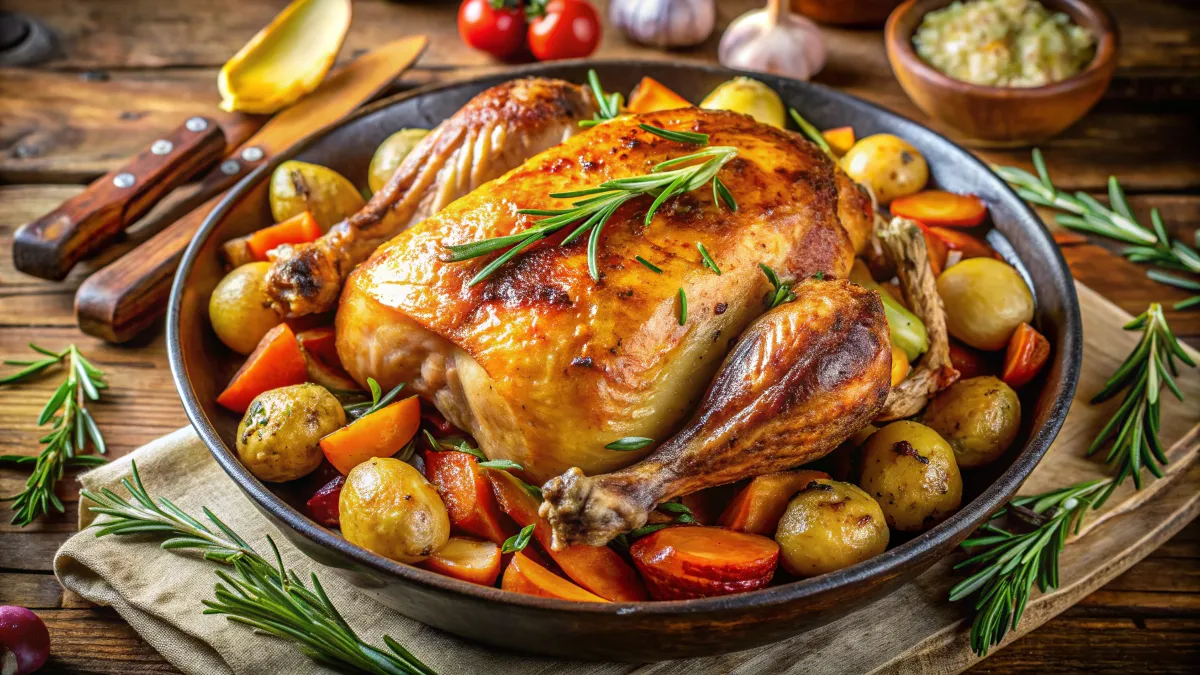Wandering why do people add butter to chicken? Cooking chicken may seem simple, but adding butter elevates the experience entirely. Whether you’re frying, roasting, or simmering chicken, butter can transform the dish by enhancing its flavor, texture, and aroma. Many people wonder why butter is often preferred over oils or other fats in chicken recipes. This article dives into the reasons behind the practice, covering butter’s role in flavor enhancement, moisture retention, texture improvement, and popular butter-based chicken dishes. By the end, you’ll understand how butter brings out the best in chicken.
Table of Contents
The Culinary Role of Butter in Cooking Chicken
Butter as a Flavor Enhancer
Butter is known for its rich, creamy taste, which adds depth to many dishes, including chicken. It blends well with seasonings, enhancing the natural flavor of the meat. When butter melts during cooking, it coats the chicken evenly, ensuring every bite bursts with flavor.
Moreover, butter contains milk solids, which brown easily during cooking. This creates a unique, slightly nutty flavor that oils cannot replicate. Whether you’re using plain butter or compound butter with herbs, the result is a well-rounded, savory dish.
Butter also pairs exceptionally well with certain herbs and spices, such as garlic, rosemary, thyme, and paprika. These combinations can make your chicken taste gourmet, even with minimal effort.
Butter for Moisture Retention
One of the main reasons people add butter to chicken is to keep it moist. Chicken tends to dry out quickly, especially when roasted or baked. Butter helps lock in the moisture, ensuring the meat stays juicy throughout the cooking process.
When applied under the skin of chicken, butter not only adds flavor but also creates a protective layer that prevents the meat from drying. This technique is common in roasted chicken recipes, as it guarantees tender and flavorful results. Butter works better than oil in this regard because of its fat composition, which helps baste the chicken naturally as it cooks.
By keeping the chicken moist, butter reduces the risk of overcooking. This makes it ideal for recipes like butter-basted roasted chicken, baked chicken thighs, or pan-seared chicken breasts.
How Butter Affects the Texture of Chicken
Creating a Crispy and Golden Skin
One of the reasons why people add butter to chicken is to achieve a crispy, golden-brown skin. When butter is applied to chicken before cooking, it helps in browning because of its milk solids. These solids caramelize during roasting or frying, giving the chicken a beautiful color and a slightly crispy texture.
Moreover, butter’s fat content helps distribute heat evenly. This ensures the skin crisps up perfectly while keeping the meat moist inside. A trick many chefs use is to place softened butter under the chicken skin before roasting. This technique creates an extra layer of richness while allowing the skin to become crisp without drying out the meat. For detailed tips on achieving crispy chicken skin, check out this butter chicken recipe on Food Network.
Tenderizing Chicken Meat
Butter not only improves the exterior but also helps tenderize the chicken. As it melts, it bastes the chicken in its fat, keeping the meat juicy. This is especially important for lean cuts like chicken breasts, which can dry out easily when overcooked. Using butter while cooking or marinating can make a noticeable difference in the texture of the finished dish.
A popular method is to combine butter with garlic and herbs to create a compound butter. Rubbing this mixture all over the chicken ensures each bite is flavorful and tender. For more inspiration, visit this Indian butter chicken recipe by Simply Recipes.
Health Aspects of Using Butter in Chicken Dishes
Nutritional Benefits of Butter
Butter, when used in moderation, can offer nutritional benefits. It contains fat-soluble vitamins like A, D, E, and K, which are essential for overall health. Additionally, butter provides a source of healthy fats that help in energy production. This explains why people add butter to chicken when they want to enhance both flavor and nutrition.
However, it’s important to use butter sparingly, especially if you’re concerned about saturated fat intake. A great way to balance flavor and health is to use a mix of butter and oil, which reduces the overall amount of butter needed while still keeping the flavor rich. You can find a healthy approach to butter-based chicken recipes in this Famous Butter Chicken recipe on Allrecipes.
Saturated Fats and Health Concerns
Though butter adds richness, it’s also high in saturated fats. Consuming large amounts regularly can contribute to health issues like high cholesterol. Therefore, it’s best to enjoy butter in moderation and pair it with lean protein like chicken to create a balanced meal. For those who are health-conscious, substituting part of the butter with olive oil can be a smart alternative.
To make butter use healthier, try clarified butter or ghee. These have a higher smoke point and fewer milk solids, making them better for high-heat cooking. You can explore this method in this Taste of Home butter chicken recipe.
Popular Chicken Dishes Using Butter

Indian Butter Chicken
One of the most iconic dishes where butter plays a central role is Indian butter chicken. This dish combines tender chicken with a rich, buttery sauce made from tomatoes, cream, and aromatic spices. The butter not only enhances the flavor but also adds a silky texture to the sauce. The combination of spices and butter creates a well-balanced taste that’s both savory and mildly sweet. This explains why people add butter to chicken in many traditional recipes.
Adding a dollop of butter at the end of cooking further enriches the dish, making it irresistible. If you want to try making this dish at home, check out this Indian butter chicken recipe from Simply Recipes.
Herb-Butter Roasted Chicken
Another delicious way to use butter with chicken is in herb-butter roasted chicken. In this recipe, the butter is infused with fresh herbs like rosemary, thyme, and garlic. It is then spread under the skin and over the chicken, ensuring that the flavors are absorbed while keeping the meat juicy.
This method results in a beautifully golden, crispy skin and succulent meat. The butter not only helps in browning but also bastes the chicken throughout the roasting process. You can also experiment by adding lemon zest or paprika to the butter for extra flavor. For more delicious recipes, check out our guide on making chicken with peanut butter at Charmed Recipes.
Techniques for Cooking Chicken with Butter
Butter Basting Method
The butter basting method is a popular technique used by chefs to add flavor and moisture to chicken. It involves spooning melted butter over the chicken continuously as it cooks. This helps the meat absorb the butter’s rich flavor while keeping it tender. Butter basting works exceptionally well when pan-searing or roasting chicken breasts or thighs.
This technique can be enhanced by adding garlic, thyme, or sage to the butter for extra aroma. As the butter melts, it infuses the chicken with these flavors. This method is perfect if you’re aiming for evenly cooked, flavorful chicken with a hint of crispiness on the outside.
Infusing Butter with Flavors
Infusing butter with different flavors is an easy way to make your chicken dishes more interesting. Simply melt the butter and add your favorite herbs and spices. Let it simmer gently for a few minutes, then use it to marinate or baste the chicken.
For example, garlic butter adds a savory kick, while lemon butter gives a refreshing tang. You can also try smoked paprika butter for a bit of heat. Infused butter not only enhances the chicken’s taste but also gives you room to experiment with various flavor profiles.
Common Questions About Cooking Chicken with Butter
Can Butter Be Used Instead of Oil?
One of the most frequently asked questions is whether butter can replace oil when cooking chicken. The answer is yes, but with some considerations. Butter has a lower smoke point than most cooking oils, meaning it can burn faster at high temperatures. However, butter adds more flavor compared to oil, which is why many prefer it.
When using butter, it’s best to cook over medium to low heat. This prevents burning and allows the chicken to cook evenly. If you want to cook at a higher temperature, a good trick is to mix butter with oil. The oil raises the smoke point while the butter still contributes richness and flavor. So, why do people add butter to chicken? It’s simple flavor and moisture.
What Is the Best Type of Butter for Chicken?
Choosing the right butter can make a difference. Regular unsalted butter is ideal because it allows you to control the salt content in your dish. On the other hand, salted butter works well if you’re looking for convenience and don’t want to add extra salt separately.
Clarified butter, or ghee, is another great option. It has a higher smoke point and is less likely to burn during cooking. Plus, it still delivers that rich, buttery taste. For dishes requiring high heat, clarified butter may be the best choice.
FAQs
Why Do People Prefer Butter Over Oil for Chicken Dishes?
Many people prefer butter over oil because of its flavor-enhancing properties. Butter has a unique richness that oils can’t match. When you use butter, it adds depth to the dish while keeping the meat moist. This is one of the main reasons why people add butter to chicken in various recipes.
Is Butter Necessary for Crispy Chicken Skin?
Butter isn’t strictly necessary, but it certainly helps. The milk solids in butter aid in browning, giving the chicken a golden, crispy exterior. If you want crispy skin without using butter, you can try using oil. However, the flavor won’t be as rich as when butter is used.
Can Butter Make Chicken Unhealthy If Used Too Much?
Butter, like any other fat, should be used in moderation. While it adds a lot of flavor and moisture, it is high in saturated fats. To enjoy butter-based chicken dishes without compromising health, balance your meals with vegetables and whole grains. You can also opt for a mix of butter and healthier oils to reduce the saturated fat content.
What Are the Best Seasonings to Pair with Butter for Chicken?
Butter pairs beautifully with a variety of seasonings. Common choices include garlic, thyme, rosemary, and paprika. Adding citrus like lemon zest or juice can brighten the flavor, while smoked paprika provides a subtle heat. For an herb-forward flavor, try combining butter with fresh parsley or dill.
For more delicious butter-based chicken recipes, you might want to check out this Chicken Leg Quarters Recipe on Charmed Recipes.
Benefits of Adding Butter to Chicken Dishes
Enhanced Flavor and Richness
One of the primary reasons why people add butter to chicken is the enhanced flavor it provides. Butter has a natural richness that elevates the taste of any dish. When melted and absorbed by the chicken, it creates a deep, savory flavor that oils alone can’t replicate. Additionally, butter blends well with spices and herbs, ensuring every part of the chicken is flavorful.
For example, adding garlic-infused butter during roasting creates a delicious combination of savory and aromatic flavors. Similarly, mixing butter with lemon zest adds a refreshing tang. These simple additions can turn a plain chicken dish into something extraordinary.
Improved Moisture Retention
Another benefit of adding butter is that it helps keep the chicken moist. Chicken, especially when baked or roasted, can dry out quickly if not cooked properly. Butter acts as a natural basting agent. As it melts, it coats the chicken and locks in moisture, preventing it from becoming dry.
This technique is especially useful when cooking lean cuts like chicken breasts. Even when grilled or roasted at high temperatures, the butter ensures that the meat remains tender and juicy. That’s why many chefs and home cooks choose butter when preparing chicken dishes.
Tips for Using Butter Effectively in Chicken Recipes

Choose the Right Amount of Butter
While butter adds flavor and moisture, using too much can overwhelm the dish. It’s important to use the right amount to avoid making the chicken greasy. For most recipes, a few tablespoons of butter are enough. When roasting a whole chicken, about 4 to 6 tablespoons should suffice.
Another tip is to spread softened butter evenly under the chicken skin. This allows the fat to melt slowly during cooking, basting the meat from the inside. Not only does this improve flavor, but it also creates a beautifully crispy skin on the outside.
Infuse Butter with Herbs and Spices
Infusing butter with herbs and spices before adding it to chicken is a game-changer. By melting the butter and simmering it with garlic, rosemary, or thyme, you can create a flavorful mixture. This method ensures the chicken absorbs more complex flavors during cooking.
To make your dish more exciting, try experimenting with different combinations. For example, blend butter with smoked paprika for a slightly spicy kick or add fresh parsley for a bright, fresh finish. This explains why people add butter to chicken it’s versatile and can be customized to suit different tastes.
Common Mistakes When Adding Butter to Chicken
Using Butter at High Heat Without Caution
One common mistake is cooking chicken with butter over very high heat. Butter has a lower smoke point than many oils, meaning it can burn quickly. When butter burns, it not only spoils the flavor but also creates an unpleasant smoky aroma. To prevent this, cook chicken over medium heat or combine butter with a high-smoke-point oil, such as olive or avocado oil.
For more tips on cooking chicken perfectly, check out our guide on Chicken Leg Quarters Recipe for additional flavoring ideas.
Skipping the Butter Basting
Another mistake is neglecting to baste the chicken with butter during cooking. Basting is crucial for ensuring that the meat remains juicy and flavorful. If you skip this step, the chicken may turn out dry, especially when using lean cuts like breasts. To get the best results, spoon the melted butter over the chicken every 10 minutes while roasting.
Alternatives to Butter in Chicken Recipes
Clarified Butter and Ghee
For those who love the flavor of butter but want a better option for high-heat cooking, clarified butter or ghee is a fantastic alternative. Since it has a higher smoke point, it won’t burn as easily as regular butter. Plus, it still provides that rich, buttery taste.
Butter-Oil Blends
Blending butter with oils is a smart way to enjoy the flavor of butter without worrying about burning it. For instance, mixing two parts of butter with one part olive oil helps increase the smoke point while maintaining the creamy texture. This technique works well for frying and sautéing chicken.
For more alternative ideas on cooking oils and butter combinations, explore our Air Fryer Chicken Recipes.
Conclusion
Butter is more than just a fat it’s a flavor enhancer, a moisture-locking agent, and a key ingredient that elevates chicken dishes to new heights. Whether you’re making herb-butter roasted chicken or simmering tender pieces in a rich butter sauce, knowing how to use butter effectively is essential for achieving the best results.
We’ve explored why butter is a go-to ingredient in chicken recipes, common mistakes to avoid, and how to get the most out of this versatile fat. So the next time you’re in the kitchen, don’t hesitate to reach for butter. It’ll make your chicken juicier, tastier, and more satisfying.
For more creative recipes, visit our guide on Chicken with Peanut Butter to discover another unique way to enhance your meals.

